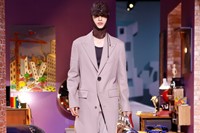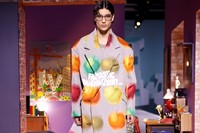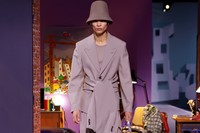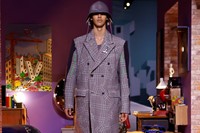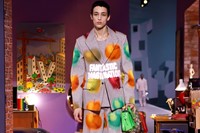Collectivity and connectivity. Since the death of Virgil Abloh in November 2021, Louis Vuitton’s menswear collections have been team exercises in collaboration, both between the members of the house’s design team themselves, and a selection of outside artists and creatives who wish, in some shape or form, to pay homage to Abloh’s legacy and influence.
But for Autumn/Winter 2023, the notion of the collective was the literal crux of the collection – a neat response to the fact that Vuitton is yet to announce a successor to Abloh, almost 18 months after his passing. Fair enough really: his are mighty big shoes to fill. And indeed, Abloh himself adored collaboration, pulling in a host of different talents to augment his own visions for Vuitton. For a house obsessed with travel, that skirting between ideas became a new signature innately tied to the nature of the brand.
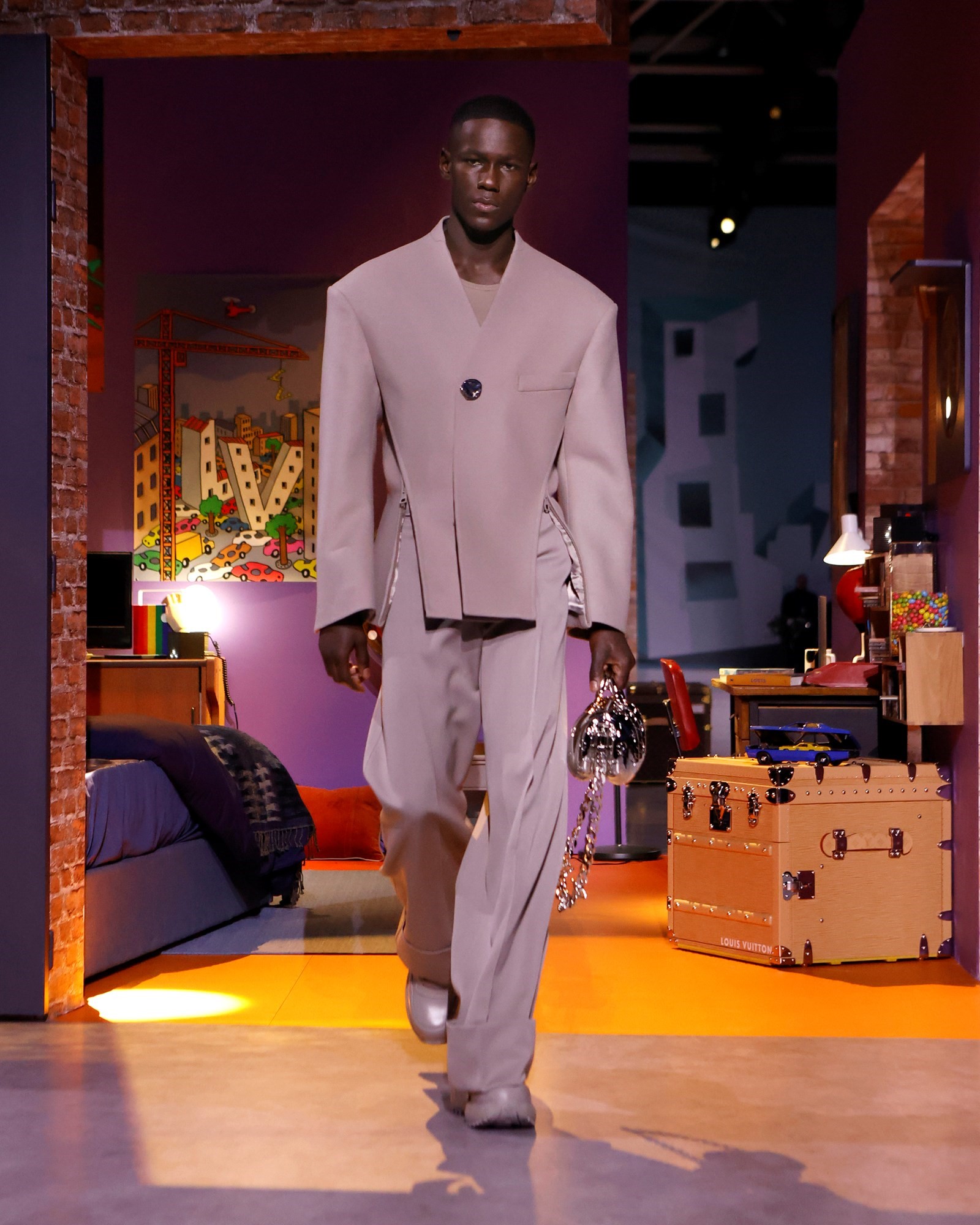
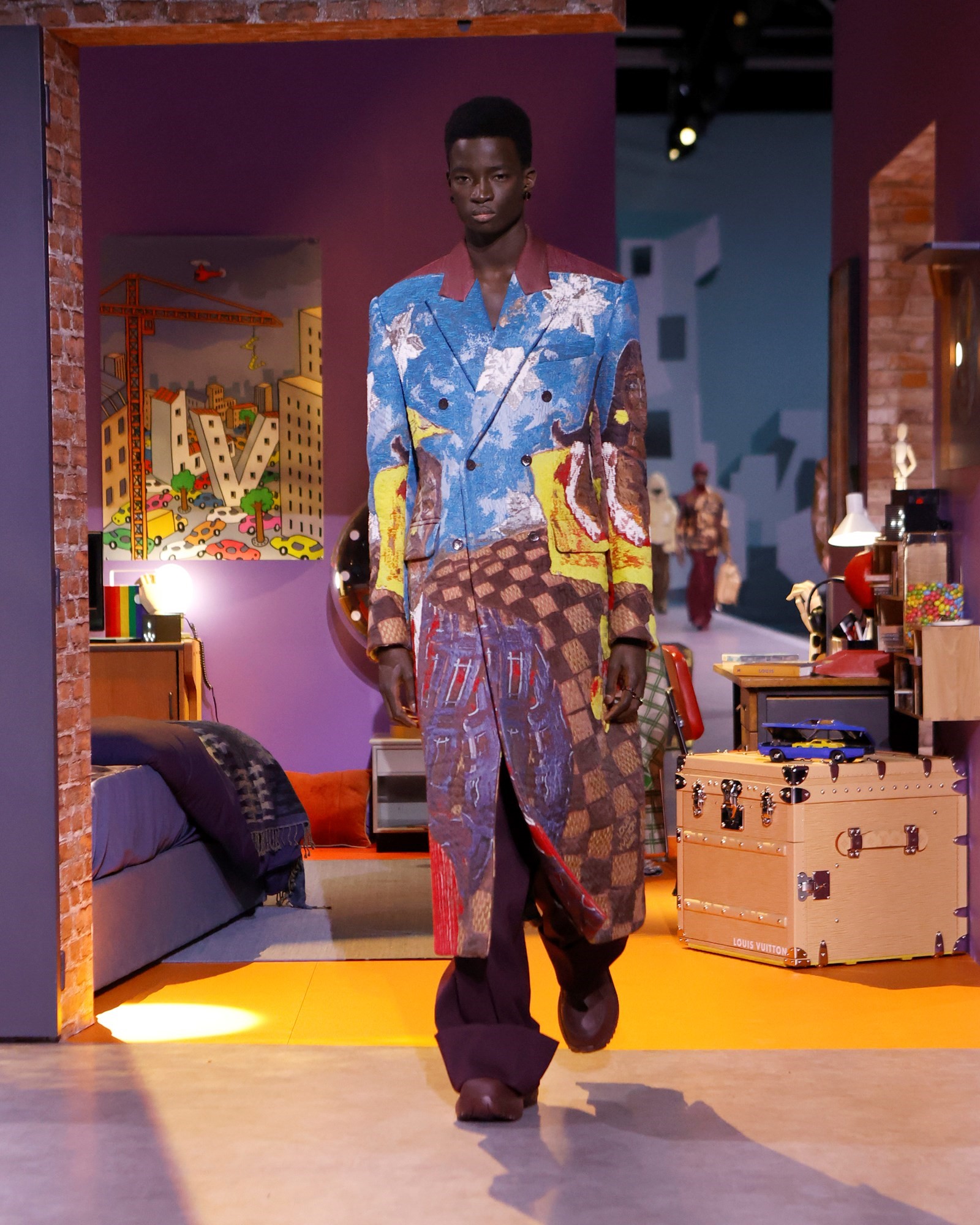
So, very much in the same vein, instead of anchoring the season to a single creative vision, for Autumn/Winter 2023 Vuitton continued to bounce ideas with a host of partners, including house stalwarts such as stylist Ib Kamara and creative director Lina Kutsovskaya, and new recruits including Spanish singer Rosalía, the American designer Colm Dillane of KidSuper, and French filmmakers Michel Gondry and Olivier Gondry. All worked on disparate yet parallel aspects: the Gondrys directed a film and devised the show’s set, of a blown-apart suburban home as an allegory for a man’s coming-of-age; Dillane devised garments the house described as ‘digital footprints’, with patterns formed from fragments of letters written by Vuitton’s studio hands, in various languages, or crafted to create faces staring out from pieces; and Rosalía, quite naturally, mounted a car and belted out some songs during the course of the show.
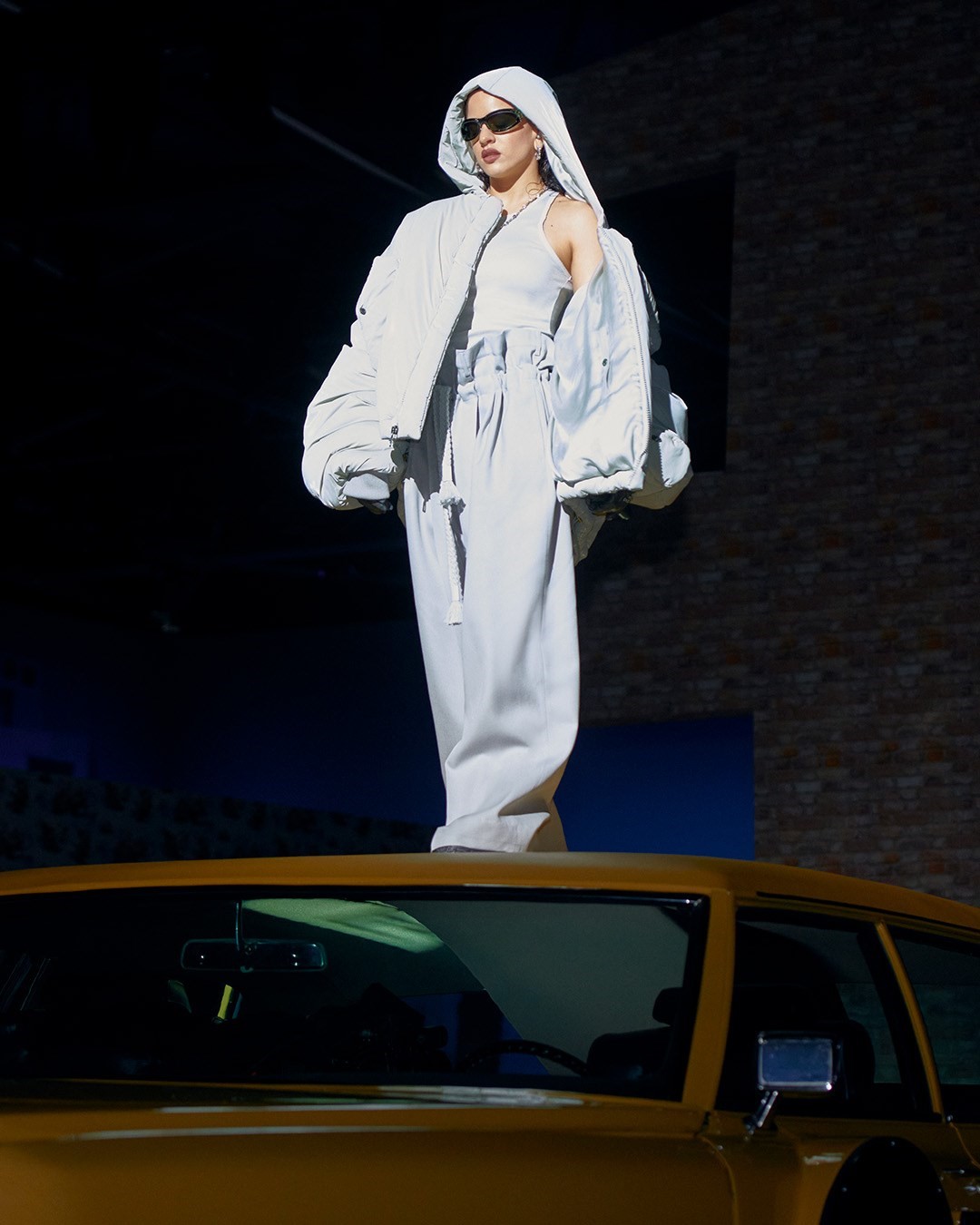
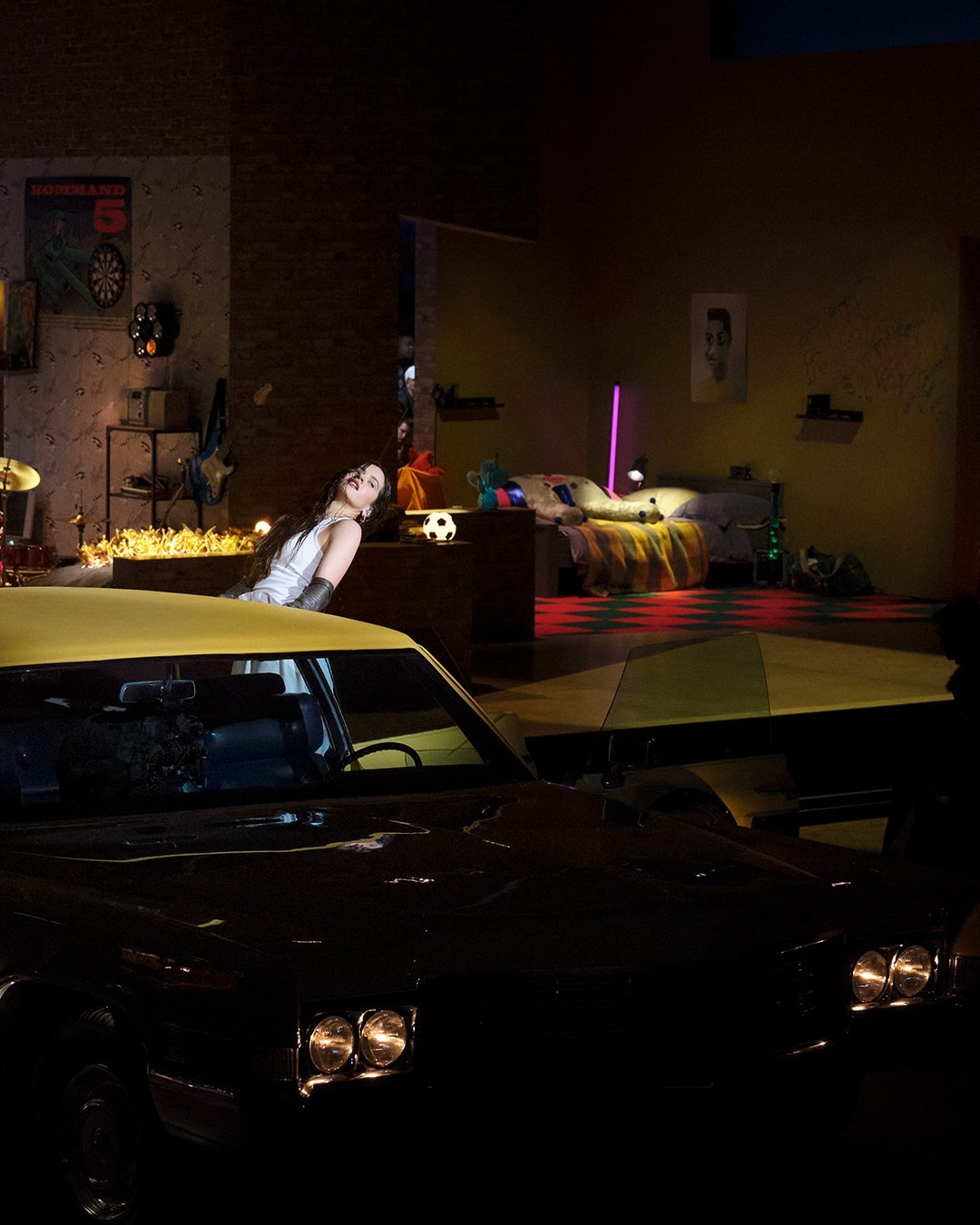
Connection was the main idea – not only the connection between the creative parties playing their visions out on the stage of Vuitton’s catwalk in the Louvre’s courtyard, but the subsequent connection with millions around the world. It was a neat idea, given Abloh’s undoubted connection to multitudes, and the reach of Vuitton itself as a brand. It acknowledged fashion’s power as a tool of communication, while also harnessing the power of others – the crowds thronging the exterior, kids skipping school and bringing traffic to a standstill in their clamour to see attendees and performers, were ample testament. Were they fans of Rosalía or fans of Vuitton? Couldn’t they be one and the same? Especially today, when fashion brands like Louis Vuitton are connected intrinsically to popular culture, objects of fandom and obsession just like pop icons.
Hence the fact that the coming-of-age story felt especially pertinent – underscoring your first nascent adult connection to the world you wish to be part of. And as the models padded through recreations of suburban bedrooms in artfully topsy-turvy tailoring – like kids playing dress-up in grown-up clothes, really – the notion of millions of other kids watching and anticipating participating in that world had a powerful draw. That’s the connectivity that really powers fashion.


